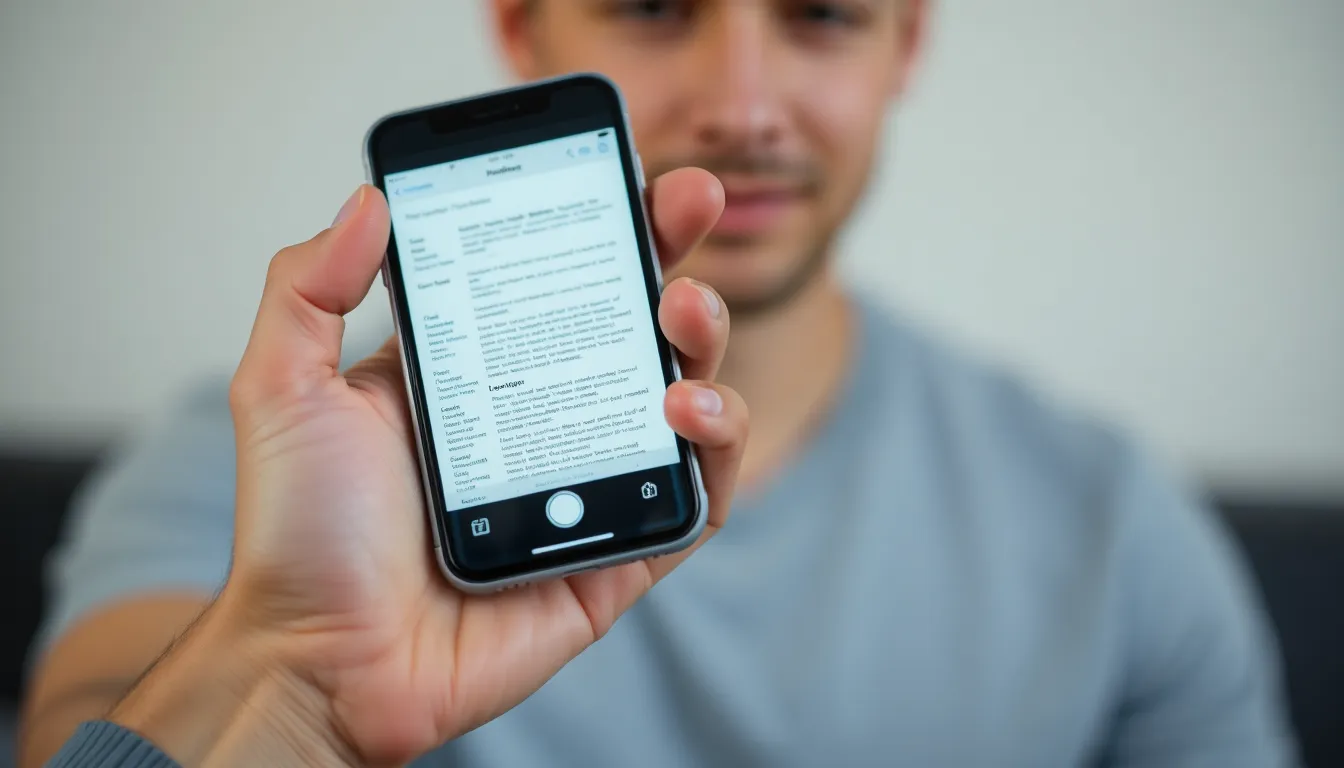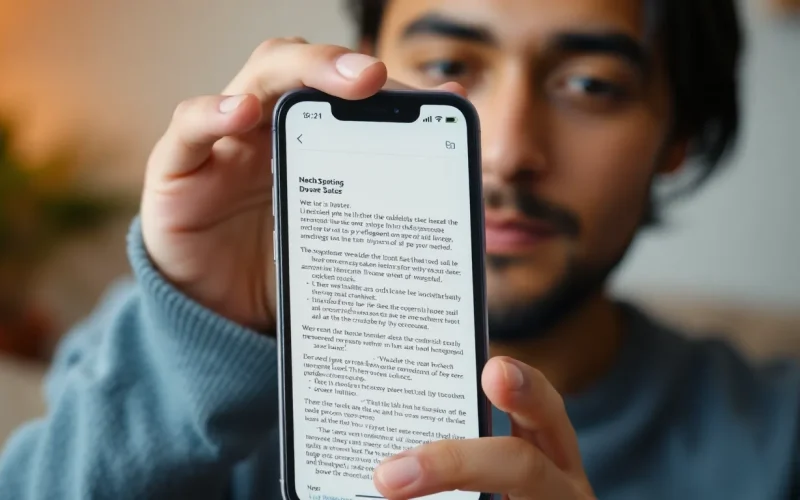Table of Contents
ToggleEver found yourself scrolling through a lengthy webpage on your iPhone, wishing you could capture the whole thing in one go? You’re not alone! Whether it’s an epic recipe, a must-read article, or that hilarious meme thread, taking a screenshot of an entire page can be a game changer.
Overview of Screenshots on iPhone
Taking screenshots on an iPhone provides a quick and easy way to save content displayed on the screen. Common uses include capturing images, preserving messages, and saving web pages for offline viewing. Users can take standard screenshots or opt for full-page captures depending on their needs.
Standard screenshots involve pressing the Side button and the Volume Up button simultaneously. This method captures the current view on the screen. Users can access their screenshots in the Photos app under the “Screenshots” album.
Full-page screenshots allow for the capturing of an entire webpage in Safari. To access this feature, users need to follow the same button combination, then tap on the thumbnail preview that appears. Once in the editor, selecting “Full Page” captures the entire content.
Editing options enhance the utility of screenshots. Users can annotate, crop, or highlight specific sections before saving or sharing. This functionality adds more value, especially when sharing information with others.
Sharing options for screenshots include messaging apps, email, and social media platforms. Users simply select the screenshot, tap the share icon, and choose their preferred application for distribution. This ease of sharing makes it convenient to send important information quickly.
Understanding these features empowers users to make the most of their iPhone screenshot capabilities. With both standard and full-page options, capturing and sharing information becomes seamless and efficient.
Methods to Take a Screenshot

Taking a screenshot on an iPhone can be done effectively through various methods. Here are the primary techniques for capturing an entire page.
Using Physical Buttons
To capture a screenshot using physical buttons, simultaneously press the Side button and the Volume Up button. This action saves the current view on the screen instantly. A thumbnail preview will appear on the bottom left corner. Users can tap this thumbnail to access editing options. After selecting “Full Page,” the screenshot captures the entire webpage. It’s a quick method, especially when wanting to document long articles or recipes without scrolling.
Using AssistiveTouch
For those who prefer not to use physical buttons, AssistiveTouch provides another option. This feature can be activated in the Accessibility settings. Once enabled, a floating button appears on the screen. Tapping this button opens a menu with various options. From here, select “Device,” then tap “More” and choose “Screenshot” to capture the screen. To take a full-page screenshot, follow the same procedure and select the “Full Page” option after capturing. AssistiveTouch is especially useful for users with mobility challenges.
Taking a Screenshot of a Whole Page
Capturing a whole web page on an iPhone streamlines content sharing. Users can acquire essential information without missing any details.
Using Safari Browser
Safari makes it easy to take full-page screenshots. After capturing a standard screenshot using the Side and Volume Up buttons, a thumbnail appears in the bottom left corner. Users should tap this thumbnail, then select the “Full Page” option. This feature captures the entire length of the webpage being viewed. Users can then scroll through the full-page screenshot and preview its contents. Saving this full-page screenshot includes all necessary details, ensuring users capture complete information in one image.
Third-Party Apps for Full Page Screenshots
Several third-party apps facilitate full-page screenshots. Apps like Stitch & Share and Tailor offer additional features and easy-to-use interfaces. These apps work by capturing multiple screenshots and stitching them together into one long image. Users can adjust settings within these apps to enhance the quality of the final product. Taking full-page screenshots with these tools often yields better results for more complex layouts or non-Safari pages. Sharing and editing options typically available within these applications further enhance their functionality.
Tips for Capturing and Editing Screenshots
Utilize the built-in editing tools immediately after taking the screenshot. Tapping the thumbnail preview opens a range of options, allowing for quick annotations. Users can draw, highlight, or add text to emphasize key information.
Explore cropping features to focus on specific areas of interest. Adjust the edges of the screenshot to exclude unwanted elements, enhancing clarity. This method keeps the content concise and relevant.
Save full-page screenshots to PDF format for easy sharing. Selecting the “Full Page” option captures the entire webpage, which then allows conversion into a PDF file straight from the preview screen. Share this document via email or cloud services for easy access.
Use third-party apps like Stitch & Share and Tailor for more extensive arrangements. These tools excel at stitching multiple screenshots into one comprehensive image, particularly for complex layouts outside of Safari. This ensures that important details are not overlooked.
Adjust the sharing method based on the context. Messaging apps, emails, or social media platforms serve different purposes, so choose the right one for the audience. Tailoring the sharing options can enhance the effectiveness of the information conveyed.
Regularly check for software updates and app upgrades. New features can improve functionality, making it easier to capture and edit screenshots on the iPhone. Staying updated ensures the best experience possible.
Mastering the art of taking full-page screenshots on an iPhone can significantly enhance how users capture and share information. With the ability to save entire web pages in a single image or PDF format, it becomes easier to retain essential details without the hassle of scrolling through lengthy content.
Utilizing built-in features like the full-page option in Safari or exploring third-party apps can streamline the process even further. Whether for personal use or sharing with others, these tools empower users to make the most of their iPhone’s capabilities. Embracing these techniques can transform how users interact with digital content, making every screenshot count.





